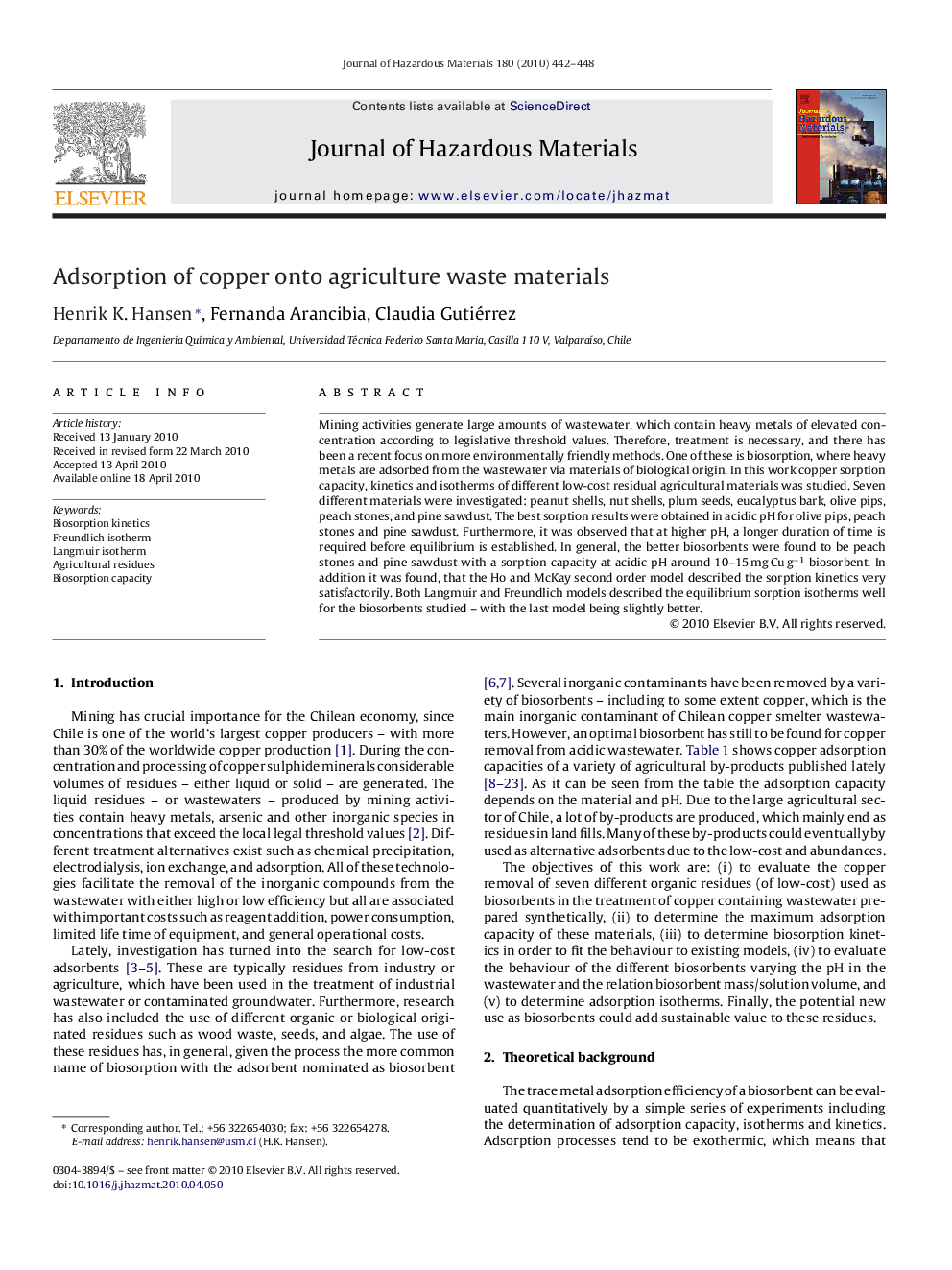| Article ID | Journal | Published Year | Pages | File Type |
|---|---|---|---|---|
| 580082 | Journal of Hazardous Materials | 2010 | 7 Pages |
Abstract
Mining activities generate large amounts of wastewater, which contain heavy metals of elevated concentration according to legislative threshold values. Therefore, treatment is necessary, and there has been a recent focus on more environmentally friendly methods. One of these is biosorption, where heavy metals are adsorbed from the wastewater via materials of biological origin. In this work copper sorption capacity, kinetics and isotherms of different low-cost residual agricultural materials was studied. Seven different materials were investigated: peanut shells, nut shells, plum seeds, eucalyptus bark, olive pips, peach stones, and pine sawdust. The best sorption results were obtained in acidic pH for olive pips, peach stones and pine sawdust. Furthermore, it was observed that at higher pH, a longer duration of time is required before equilibrium is established. In general, the better biosorbents were found to be peach stones and pine sawdust with a sorption capacity at acidic pH around 10-15 mg Cu gâ1 biosorbent. In addition it was found, that the Ho and McKay second order model described the sorption kinetics very satisfactorily. Both Langmuir and Freundlich models described the equilibrium sorption isotherms well for the biosorbents studied - with the last model being slightly better.
Keywords
Related Topics
Physical Sciences and Engineering
Chemical Engineering
Chemical Health and Safety
Authors
Henrik K. Hansen, Fernanda Arancibia, Claudia Gutiérrez,
